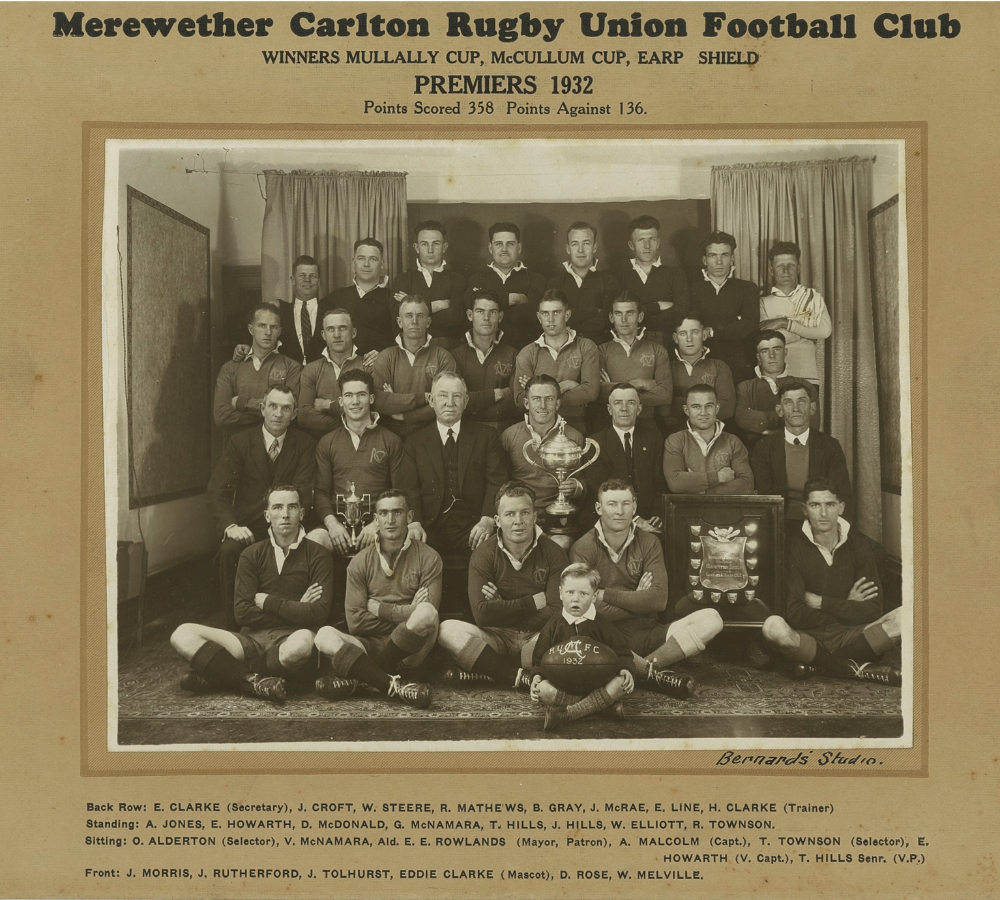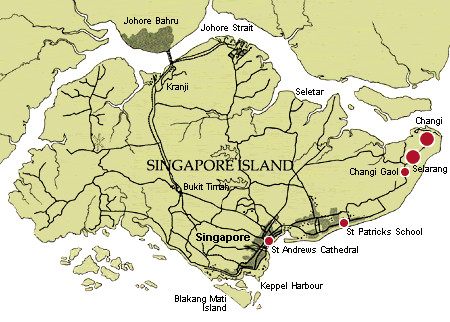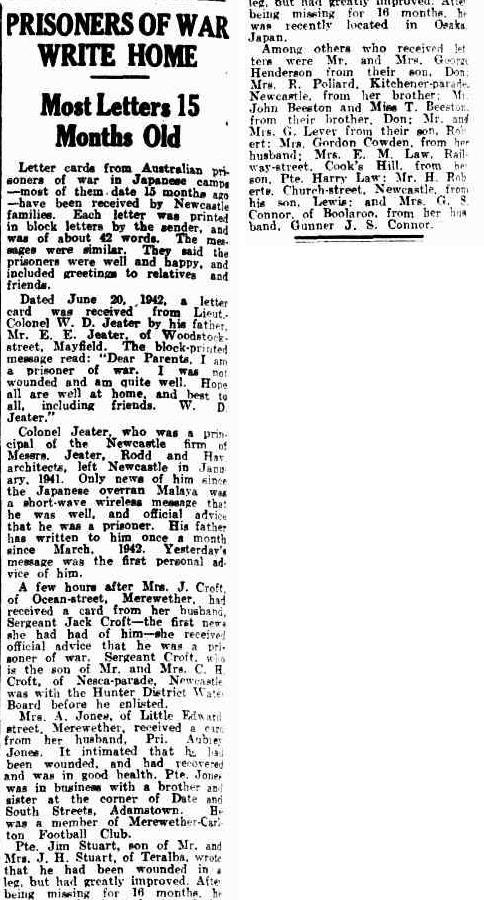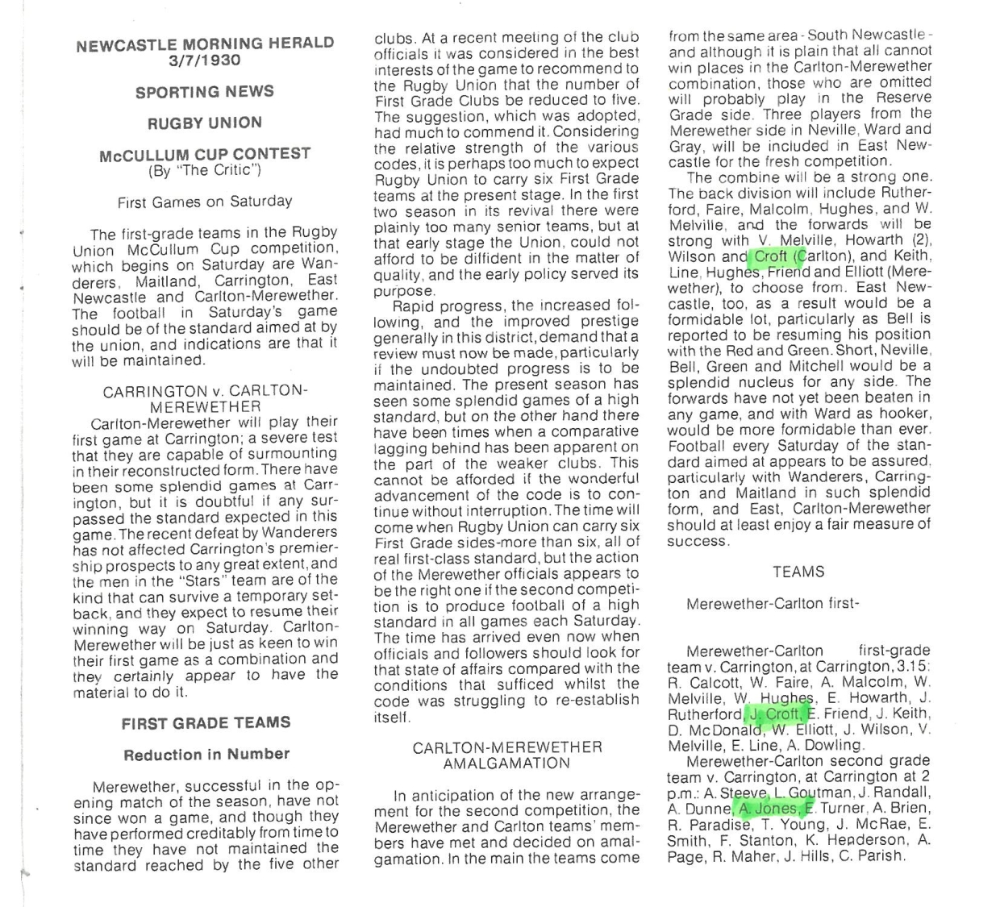JACK CROFT AND AUB JONES OUR ANZAC HEROS
JACK, AUB HONOURED ON ANZAC DAY
Merewether Carlton will pay tribute to foundation players Jack Croft and Aub Jones at the club’s Anzac Day clash with Wanderers at Townson Oval.
Both men served Australia in World War 2 in different units of the Australian Imperial Force. Despite both becoming prisoners of the Japanese following the fall of Singapore they did return home to their families, although not until some three and a half years later.
The Greens are hopeful that Jack’s son Julian and Aub’s youngest daughter Christine will be part of our round two match on Anzac Day.
The rugby journey for Jack and Aub started long before they left our shores to fight for their country.
Both played for different clubs before they became teammates when Merewether Carlton was formed in 1930.
Jack originally played for the Carlton Club in 1928 and 29, while Aub played for Cooks Hill Surf Club RUFC in 1929. The club changed its name to Merewether RUFC in March, 1930. Each represented those clubs in the NRU’s first competition of 1930 – the Mullally Cup competition which was played from April to June.
Jack and Aub would play for Merewether Carlton in the second NRU competition of 1930 (July to September) – the McCullum Cup. Their first game for the Greens was the Club’s very first on 5 July 1930 at Carrington Oval. (See Herald article 3 July 1930 at the end of this article.
Both Jack and Aub played through 1931 and 32 and to become members of the Club’s first 1st grade premiership in 1932.

Little did they know what awaited them when they joined different units of the AIF.
Jack Croft enlisted in 1940 and was taken into the 2/15th Field Regiment (Artillery). After completing training, the Regiment embarked for Singapore arriving on August, 15 1941.
Following his enlistment in 1941. Aubrey Thomas Jones went into 2/20th Battalion which arrived in Singapore on September 8, 1941.
We are not aware whether Aub and Jack were able to get together in the months leading up to the fighting. Both were stationed on the Malay Peninsula, north of Singapore – Aub with his infantry unit and Jack with his artillery.
The first contact with the Japanese occurred in mid-January and from then on they were in almost constant action in a fighting withdrawal down the peninsula. By the end of January, the last of the Allied troops had crossed the causeway between the peninsula and Singapore Island. The causeway was then blown.

The Japanese attack on Singapore commenced at 10.30pm on February 8.
The defence of Singapore was poorly conceived and conducted. Despite clear indications that the Japanese would concentrate their attack on the island’s north west, the British commander Lieutenant General Percival, sought to defend the entire coastline leaving him with little depth and an inadequate reserve. The 8th Australian Division, considerably weakened after the fighting in Malaya, was allocated the vital north-western sector.
When the Japanese attacked on the night of February 8, 1942 it was too weak and dispersed to hold them back, initiating a disorganised retreat towards the centre of the island. In succeeding days, Percival’s reluctance to commit reserves from other parts of the island, and a virtual command breakdown in the 8th Division, lead to the British Commonwealth forces being pushed back into a steadily decreasing perimeter around Singapore city. It was an untenable position. More than one million civilians remained in the city, the Japanese had captured its main water supply, and their aircraft were free to bomb at will.
At 8.30pm on February 15, 1942, more than 130,000 troops, including 15,000 Australians, were surrendered to the Japanese.
Among the Australians were NX25391 Serjeant Jack Croft and NX71652 Private Aub Jones – two “originals” from Merewether Carlton RUFC.
Jack Croft had been keeping a diary. He would continue to do so under extremely difficult and dangerous circumstances. The following are extracts from Jack’s entry for February 15, 1942;
‘The day opened with very heavy enemy artillery fire and air bombing and further (casualties to us). The positions as regards counter fire and required tasks by the Infantry was the same as yesterday, permission to fire could not be obtained and although we could observe the Japs pulling guns into position on top of hills and the information passed back with a request for permission to engage them, we were still not allowed to fire. These guns later did severe damage to us and caused deaths and casualties; one gun crew of E. Troop being wiped out. Jack Collins from Newcastle was badly wounded by these guns – 4p.m. in the afternoon.
During late afternoon warning of a possible “Cease Firing” was received. Our tempers were not the best since being unable to hit back and this information did not improve them. The Japs could not have received similar orders as they gave us their all.
We received the “Cease Firing” order at approximately 1900 hours to operate from 2030. (This order as far as ceasing did not effect us to any extent we had been unable to receive permission to fire for the last 24 hours.) Naturally our reactions were not in agreement and howls of protest filled the air and then the silence that dropped upon us was deadly, broken only by the crack and bang of snipers firing their explosive bullets at nothing in particular.
Thus ended my short experience as a soldier in the action.
My next experience is to be that of a Prisoner of War.’
Jack and Aub met within a month of their internment which would appear to be their first in Changi. The following is Jack’s diary entry for 16 March 1942;
“Eileen’s birthday. Went to ear specialist about my ear, there is nothing that can be done for it. Met Aub Jones waiting for the Eye Specialist. Poor chap had a grenade burst near his face destroying the sight of one eye, he looked a pitiful job as he also just finished dysentery, he is just a skeleton and very lucky to be alive. Dysentery is getting worse, thousands of cases but only about 30 have died with it.
Their families would not know of their fate until September 1943 – 17 months after the fall of Singapore.


TO BE CONTINUED LEADING UP TO ANZAC DAY 2023.
FURTHER READING;
- Follow on with this story on our next blog post specifically onJack Croft
- Battle for Singapore
- 2/15th Field Regiment
- 2/20th Battalion
- Jack’ Diary can be viewed/downloaded here
- Anzac Portal Changi















Social NewsNews and information
Merewether Carlton Rugby Club
4 days ago
Photo
Share on Facebook Share on Twitter Share on Linked In Share by Email
5 days ago
To read the full story head to merewethercarlton.com.au/anzac-day-2024-a-tribute-to-dr-idris-the-doc-morgan/ ... See MoreSee Less
Photo
Share on Facebook Share on Twitter Share on Linked In Share by Email
Merewether Carlton Highlights @carltonrugby
@carltonrugby Rugby Union Club
merewethercarlton
Official account of Merewether Carlton Rugby Union Club 🟢
Est. 1930
#bleedgreen